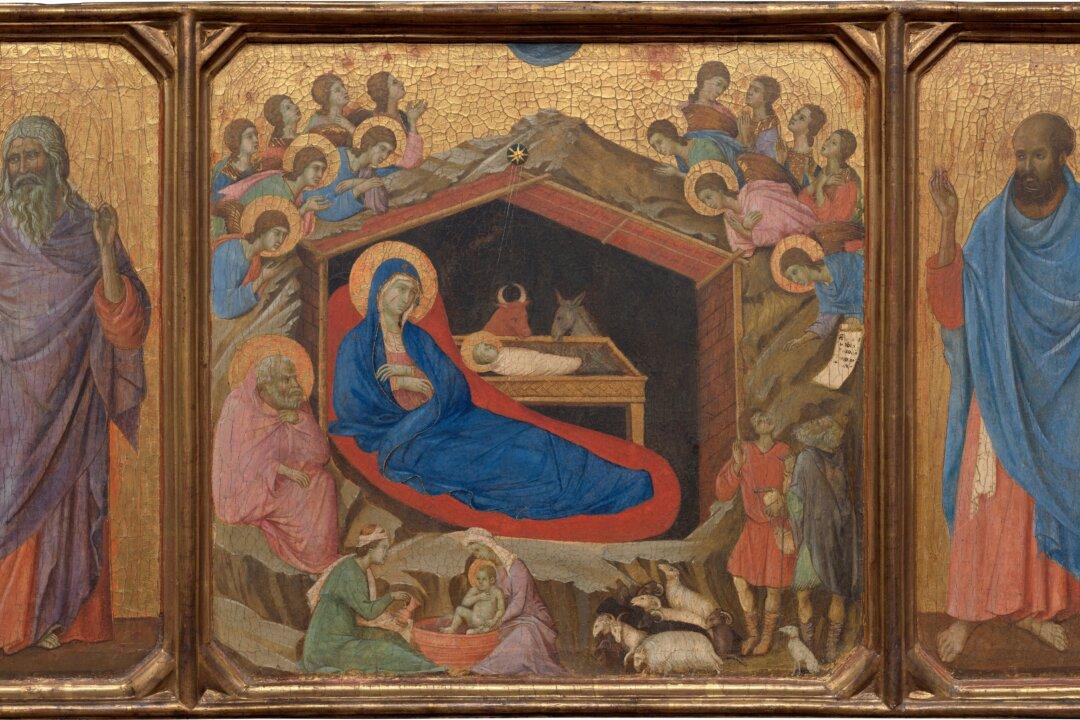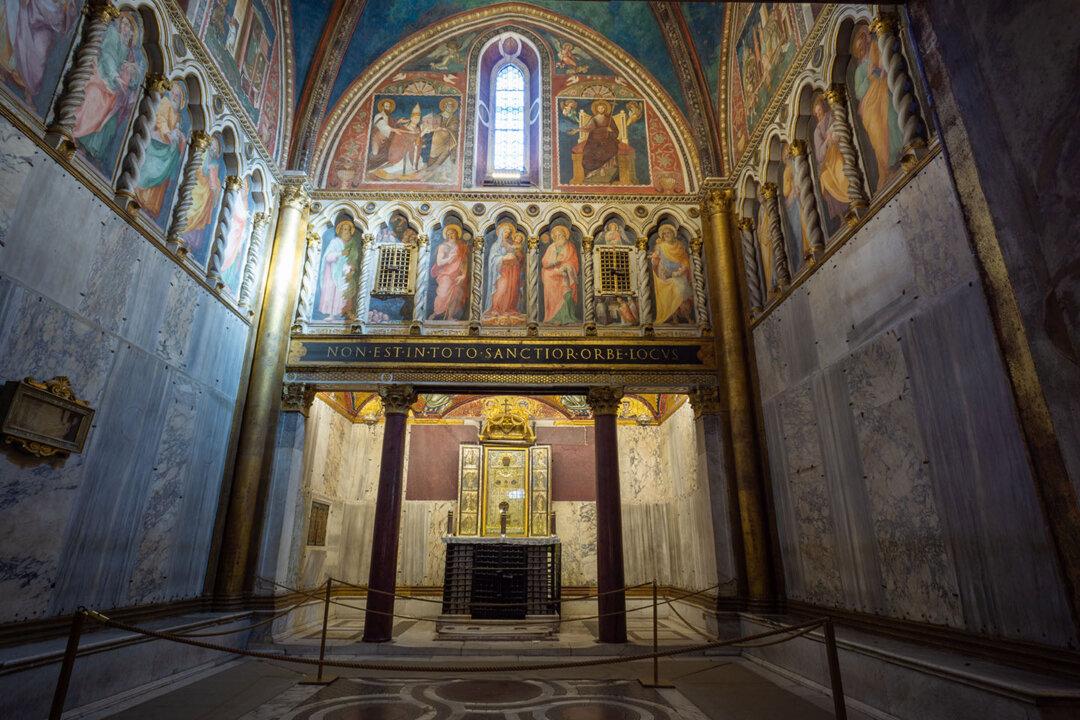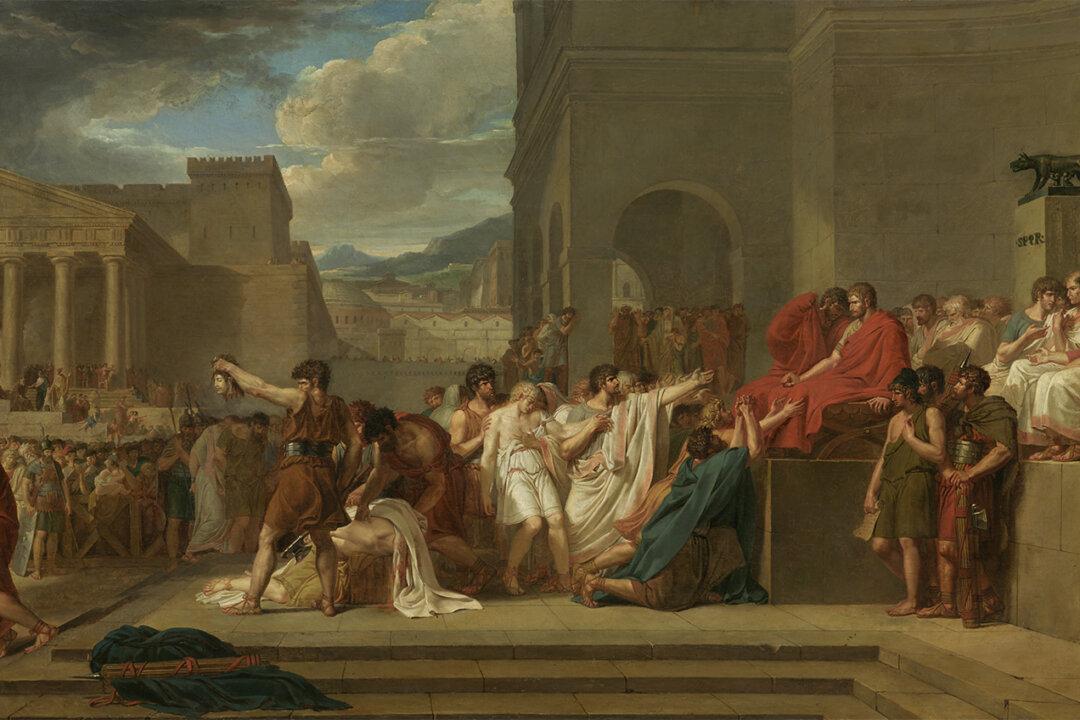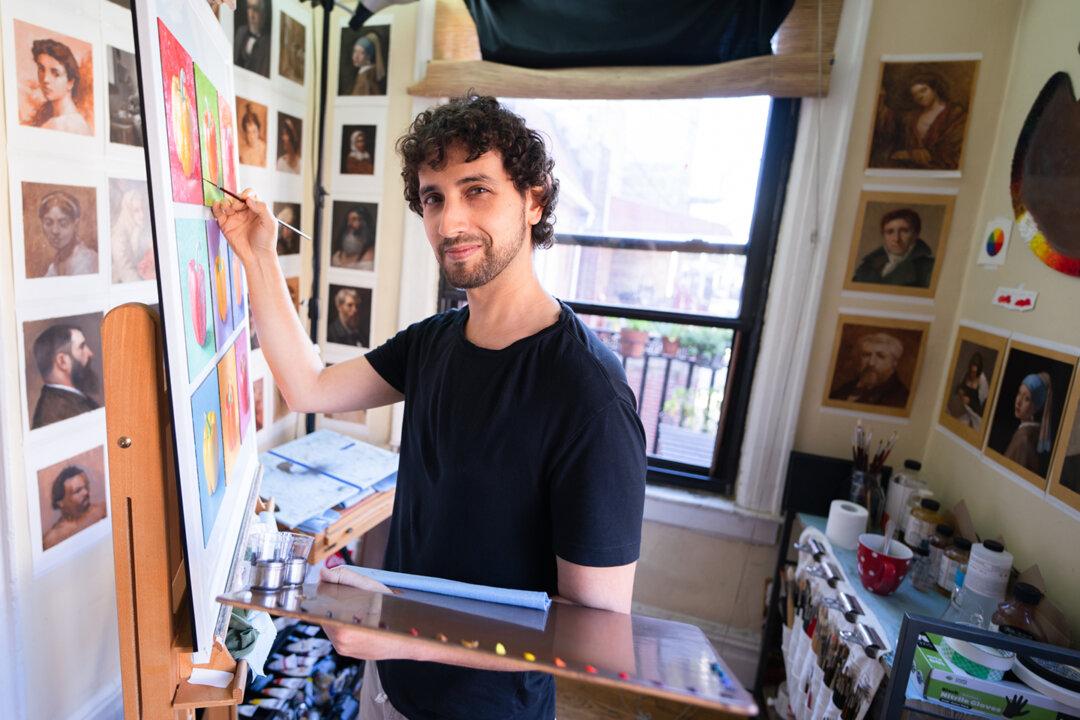The scene is set: Golden panels, flickering under the spotlight, shine even brighter than they once did in the homes and churches of late medieval Italy. The gilded surfaces, adorned with virtuoso painting and decorative punchwork, draw us into 14th-century Sienese art. The city’s robust, early Renaissance artistic tradition formed the basis of the Metropolitan Museum of Art’s exhibit “Siena: The Rise of Painting, 1300–1350.”
Siena might not sound like an intuitive choice for an exhibition of Italian art. Indeed, talks of the Renaissance have consistently focused on the city of Florence as its undisputed point of origin, often at the expense of the neighboring Siena—its longtime rival and sometimes enemy, which Florence eventually surpassed and annexed. But in the 14th century, the southern Tuscan city was one of the most vibrant centers of art. The splendor and elegance of the Sienese school of painting was as much in vogue as Florentine art.





